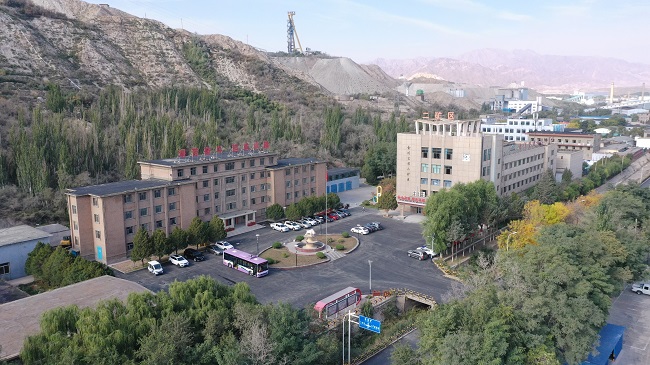
The No.2 Mine of Jinchuan Group
Over the years, in order to completely eliminate the waste-rock-caused harm to the environment, the No.2 Mine has explored underground waste rock filling technology, and achieved zero discharge of underground waste rock.
The annual filling volume of Jinchuan's mine currently exceeds 3.9 million cubic meters, making it the largest metal mine in China that utilizes downward stratified cemented filling. With the gradual development of modernized mines towards environmental protection and intelligence, Jinchuan faces the issues such as tailings pond capacity restrictions, the scarcity of rod sanding resources, and high pressure from waste rock storage.
In response to the requirements of national green mine construction, the No. 2 Mine has developed and applied the complete tailings-waste rock-gypsum filling system. This filling system enables the annual utilization of 1.97 million tons of waste rock and 1.31 million tons of tailings, far exceeding the 1.6 million tons of waste rock produced by Jinchuan's mine each year.
In addition to realizing waste-free mining, the application of this system has also reduced filling costs, having a significant and far-reaching influence on Jinchuan's safe, efficient, green, and sustainable production at the mining site.
While effectively managing solid waste, the scientific and effective treatment of wastewater is also an important aspect of the green development of the No.2 Mine.
The 700m underground slurry separation equipment in the No.2 Mine has been put into operation to tackle this problem. This equipment enhances the efficiency of mud block agglomeration by treating underground sewage with a coagulant. The treated sewage is then pumped into the filter press. Under the dual action of the slurry pump and the oil cylinder, the liquid from the outlet of the filter plate flows into the water tank and finally into the clean water tank. The treated clean water can be reused for production.
At the same time, two sedimentation tanks have been built. Once the underground sewage has been pumped to the surface, it will undergo sedimentation treatment and be used for dust suppression and irrigation for greening, therefore achieving the goal of no discharge of underground sewage.








